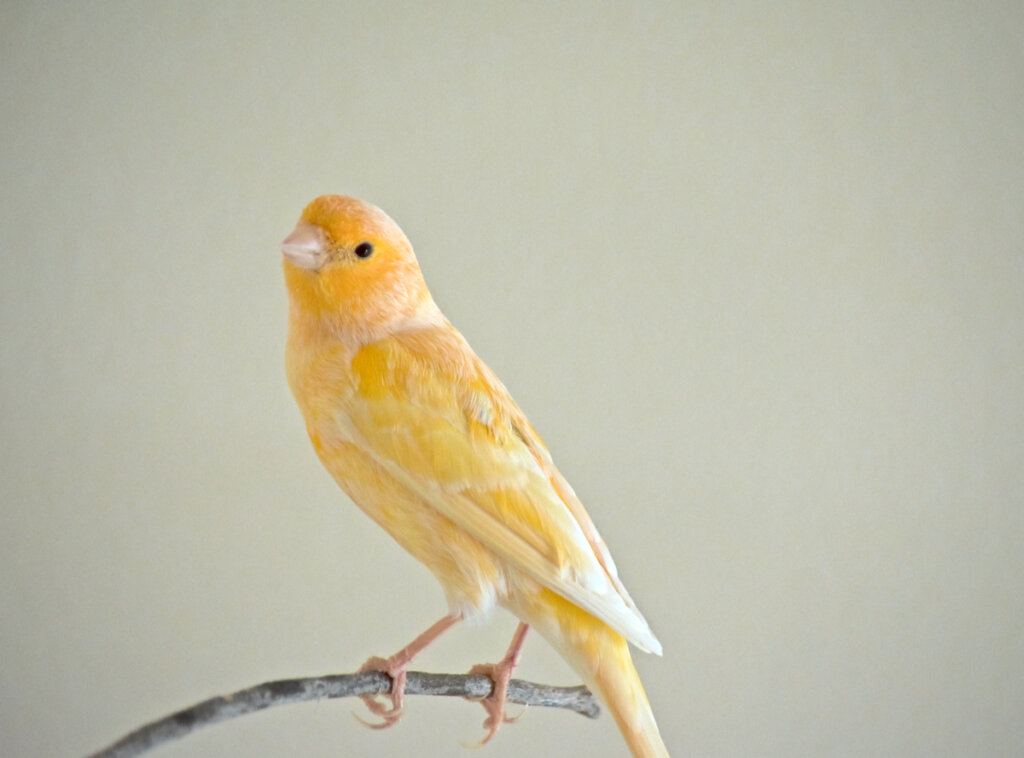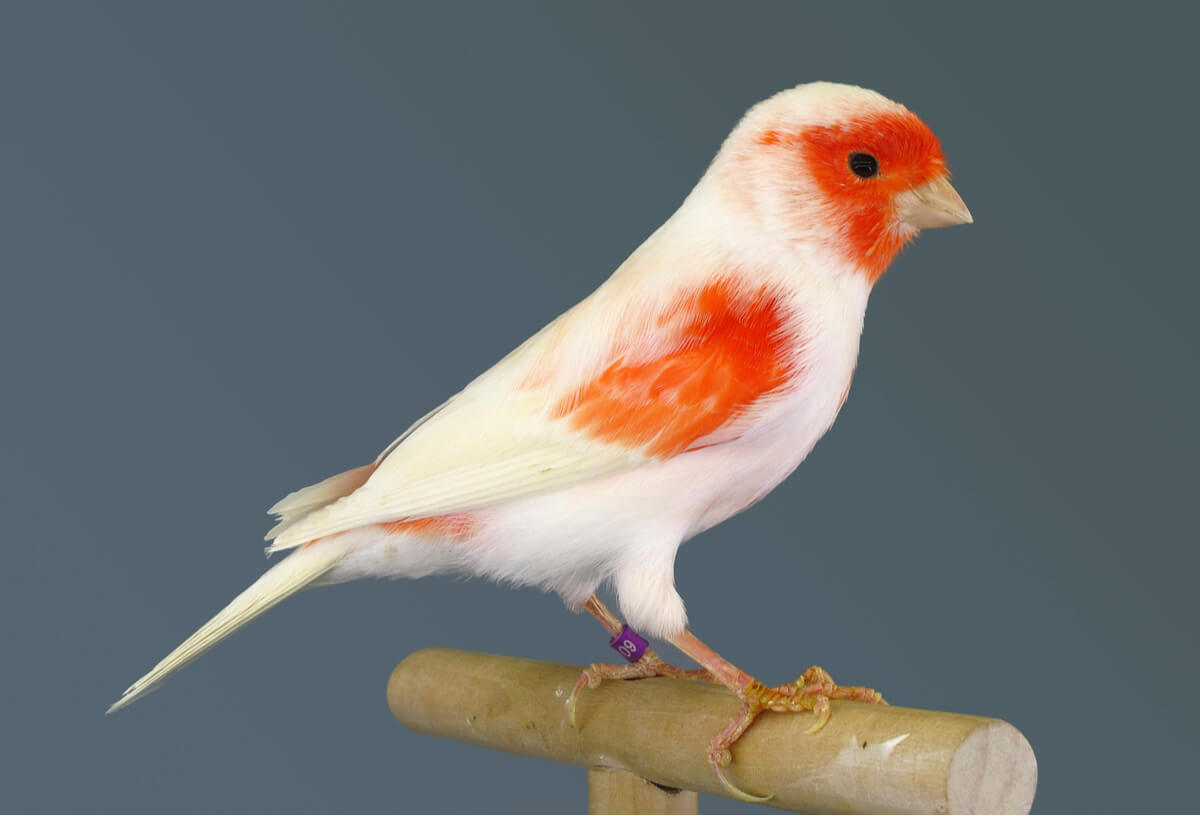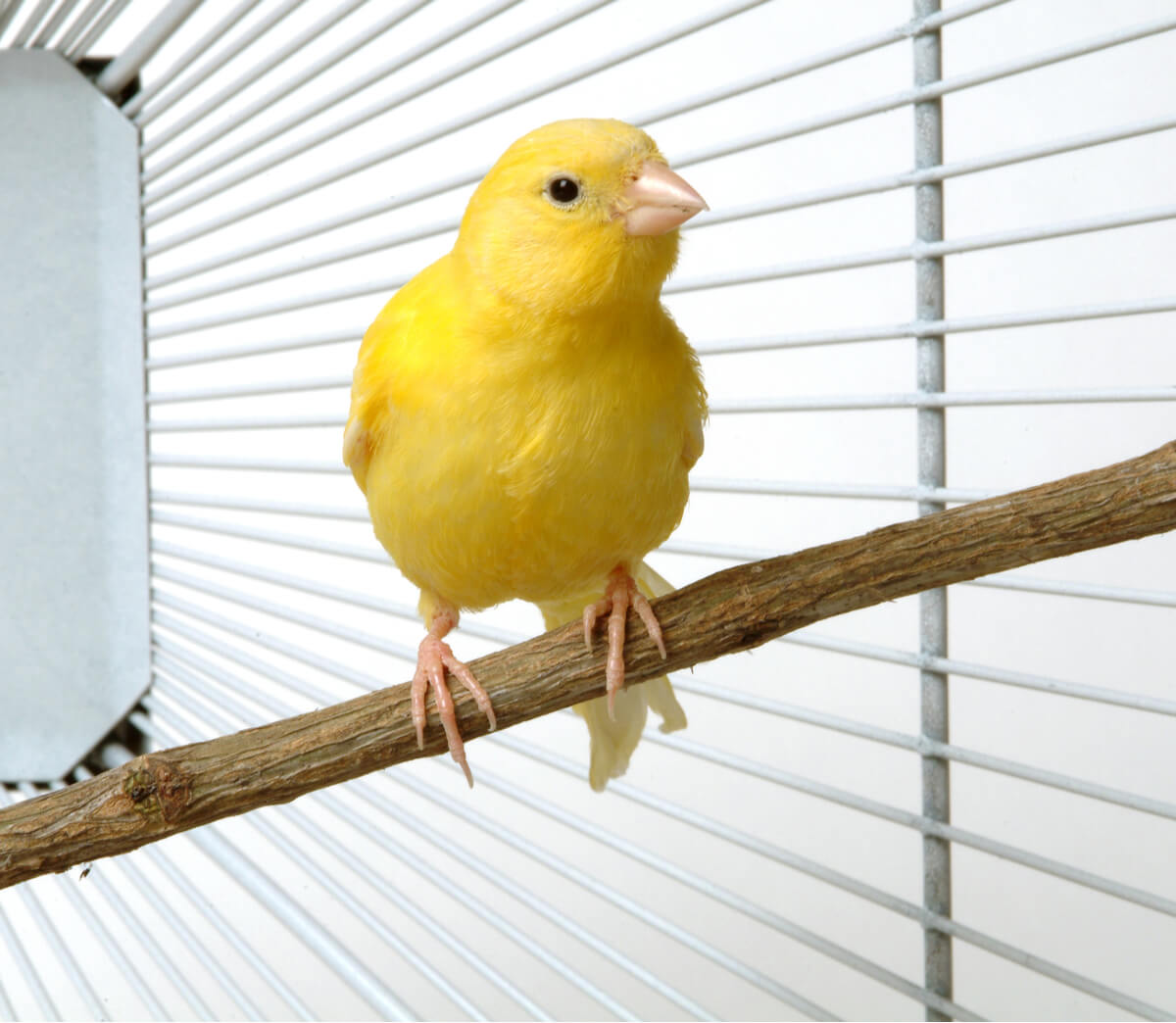Why Do My Canary's Feathers Fall Out?

Canaries (Serinus canaria subspecies domestica) are the most common household birds as pets, along with parakeets (Melopsittacus undulatus) and the genus Agapornis. These birds have been in the domestic environment since the seventeenth century and there’s extensive knowledge about their care and physiology at a scientific level. However, some owners don’t know why their canary’s feathers fall out every year.
Although it may sound alarming, feather fall is almost always a normal physiological event. Birds shed their feathers once a year to renew their protective coat. However, if this shedding occurs outside of the summer, your pet may have a fungal, viral, or bacterial disease. If you want to know more about this topic, we encourage you to continue reading.
Molting in canaries
Bird’s feathers are epidermal structures – derived from the skin – that are used as protection against intense heat and cold. In addition to this, in some species, they serve as a mechanism to go unnoticed by predators or as a sexual selection strategy. In peacocks, for example, feathers are vital for courtship and mate selection.
The feathers are degraded by friction, blows, and the action of external parasites. As these epidermal structures are dead and cannot be repaired, the bird has to devote a specific time of year to renew them. In canaries, the feather change or molting period takes place in summer.
The beginning of the molt is partly conditioned by light and climate. That is, when the day has many hours of light — about 14 — and the temperatures are high. The canary’s feathers fall out at this time of year because it’s the most appropriate time. This is because it doesn’t have to protect itself from the cold and the breeding season has come to an end.
Birds usually molt after breeding and before the migratory season begins in autumn-winter.

Hormones condition molting
Rather than the increase in sunshine hours, what most encourages the beginning of the molt is their reduction. The longest day of the year is June 21, and from this date on, the photoperiod begins to gradually shorten. The variation is much more notable in August. Most of the canaries molt in August, although some do it early in July.
The molting process is believed to be multifactorial and mediated by various hormones. However, the action of each of them hasn’t yet been fully described. According to studies, gonadal steroid hormones, corticosteroids, thyroid hormones, and prolactin may play an important role in feather shedding in birds.
My canary’s feathers fall out due to its molting: how can I help it?
So, now you know that feather fall in July and August is completely normal for canaries. However, there are certain things you can do to make the process easier for your pet. Among the considerations to take into account, we can highlight the following:
- During the molt, male canaries stop singing, even for several weeks. Don’t disturb them if this is the case and don’t try to pressurize it with recordings of other males to regain its voice. This is normal and if you try to correct it, you’ll only stress the animal out even more.
- At this stage, canaries need to have a bathtub with warm water at their disposal every morning. This way, they’ll be able to sanitize their new feathers and groom them as they grow. If you put a few drops of vinegar in the water, you’ll help the animal to deworm.
- Moving the feathers is a very energy-demanding process. Therefore, the canary will require specific supplements for this stage rich in protein. You must bear in mind that feathers are 88% protein material, hence this macronutrient is so important.
Beyond this, we recommend that you leave the canary calm and away from very strong stimuli until its molting process is finished. Remember that it’s the most delicate time of the year for birds, so respect your pet and let them take their time.
My canary’s feathers fall out outside the molting season
Everything that we have said so far is applicable to the molting season, that is, during July-August. If your canary’s feathers fall out in the middle of winter or early spring, it’s time to worry. Next up, we’ll tell you reasons why this event can occur outside of these times.
False molt
Molting is sometimes out of tune in domestic canaries due to the lack of a consistent environmental pattern. Too high temperatures in winter (due to heating, for example), stressful stimuli, and too much light will cause the bird to make mistakes and begin to change its feathers when it isn’t time.
In these cases, it’s often useful to reduce the number of daylight hours to 8-10 maximum. It’s also recommended to change the location of the cage to a place without stressors that’s around 20-22 degrees Celsius. In this way, you can stop the falling of feathers out of season.
Diseases
Many diseases are associated with feather loss, as this is one of the first signs of poor health, a deteriorated immune system, and malnutrition. In the following list, we’ll bring you some of the pathologies that can cause this event:
- Parasites: Internal or external parasites may be preventing the correct maintenance of the feathers. In these cases, a fecal analysis and physical examination are usually necessary to detect the problem organism.
- Viral and bacterial infections: Depending on the pathogen, antibiotics or supportive therapies will be prescribed.
- Behavioral problems: If the canary is housed with other species of birds – something that should never be done – these can hurt it and pull its feathers out.
Depending on the location of the infection or disease, the bird may show other symptoms beyond feather shedding, such as respiratory problems, diarrhea, poor appetite, seizures, and much more. All the cited clinical signs indicate the need to promptly see a veterinarian.

As you have seen, a canary that loses its feathers in summer isn’t a cause for concern, as it’s molting. However, if this occurs out of season, it’s usually a sign of stress, anxiety, or an infectious disease.
All cited sources were thoroughly reviewed by our team to ensure their quality, reliability, currency, and validity. The bibliography of this article was considered reliable and of academic or scientific accuracy.
- Bentley, G. E., Audage, N. C., Hanspal, E. K., Ball, G. F., & Hahn, T. P. (2003). Photoperiodic response of the hypothalamo‐pituitary‐gonad axis in male and female canaries, Serinus canaria. Journal of Experimental Zoology Part A: Comparative Experimental Biology, 296(2), 143-151.
- WEICHEL, K., SCHWAGER, G., HEID, P., GÜTTINGER, H. R., & PESCH, A. (1986). Sex differences in plasma steroid concentrations and singing behaviour during ontogeny in canaries (Serinus canaria). Ethology, 73(4), 281-294.
- Koch, R. E., McGraw, K. J., & Hill, G. E. (2016). Effects of diet on plumage coloration and carotenoid deposition in red and yellow domestic canaries (Serinus canaria). The Wilson Journal of Ornithology, 128(2), 328-333.
- Hurley, L. L., Wallace, A. M., Sartor, J. J., & Ball, G. F. (2008). Photoperiodic induced changes in reproductive state of border canaries (Serinus canaria) are associated with marked variation in hypothalamic gonadotropin-releasing hormone immunoreactivity and the volume of song control regions. General and comparative endocrinology, 158(1), 10-19.
